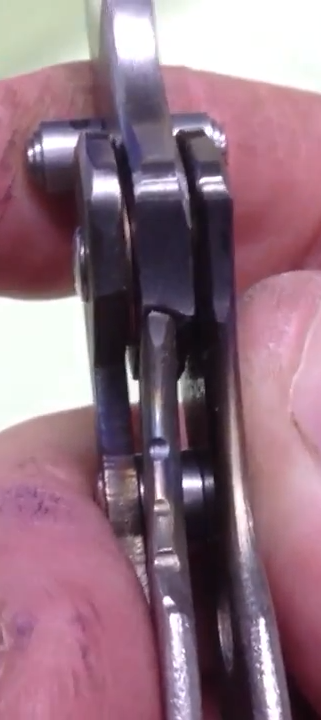Thank you, that's how I would expect, to have a discussion. We just present our opinions and talk. I never insist I am right, just present my opinion like in my very first post and let people to either agree or disagree, and present their opinion like you are doing. That's how a discussion should be.Hi
Here you go
Kyley Harris "cKc" https://www.youtube.com/@knivesandstuff
if you imagine taking a normal slanted framelock, but place a "wall" at the end so that it cannot go further, or bind up.. then concave out the centre of the lockface, and convex the lockbar so that under force it cannot slide off. All energy pushes the lock inwards to the centre.
The design is, rather than preventing lock rock, to guarantee that it will never bind up and jam, and never come off the lock (unless destructive force is applied).

I read what you said a few times, this is the drawings from what I understand from you and see whether I got your idea correct:

Fig. a shows what I understand from you. The bottom of the blade is CONCAVE and slanted towards the Wall on the right side. The liner top is CONVEX shape(GREEN). The WALL is on the right side to prevent the liner from going towards the right too far.
I issue is show in Fig. (b) and (c). If you concave the bottom of the blade. In order for the liner to go UNDER the blade, it has to pass through the left side of the CONCAVE as shown in (b). BUT if you make the liner short enough to pass under the left side of the CONCAVE. When the liner stop in the middle of the CONCAVE, it will be way too short and not touching the bottom of the blade!!! The blade is not going to be locked tight and rattle. There is not way you can have the liner long enough to be tight in the middle, but still can pass the edge of the bottom of the blade on the left side.
Maybe I miss understand your description. Maybe it would help if you draw it out.
I went through a few of the videos you posted, I have not found anything that is relevant to the discussion. Maybe you can link the specific video on this subject.
Thanks
Last edited:
